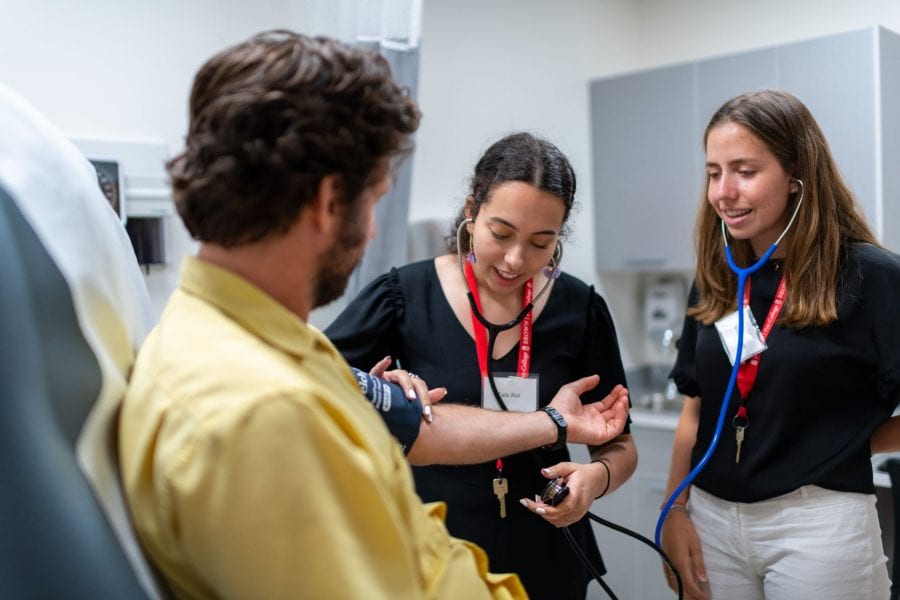Types of Teaching Support:
Teaching Associates
Teaching Assistants
Graders
Lab and Studio Monitors
Models
Courses are eligible for teaching support (Teaching Assistants, Teaching Associates, etc.) when enrollment reaches 18 students (or 10 students for lab courses). While we expect that instructors will be monitoring their course enrollments, we will contact instructors if it appears their course will warrant course support. We look to instructors to identify the individual with whom they will work and what type of support they request, and to convey this information to us. While teaching support is provided based on enrollment, it is our expectation that whatever type of course support is provided not only affords the instructor with a more manageable workload but also adds significantly to students’ educational experiences. In considering which type of teaching support they request, instructors should carefully consider the different kinds of teaching support available in relation to their course objectives and syllabus.
If you have identified an individual to support your course, please advise pcsugcourses@brown.edu. If an instructor requires assistance in locating course support, our office can aid in recommending one. Instructors should email pcsugcourses@brown.edu with their requirements. All teaching support personnel must be I-9 compliant before the first day of class.
Teaching Associates
Teaching Associates are typically Brown graduate students who serve as Associates for summer courses offered through their home department, and in areas in which they have a developing expertise. Associates typically attend all classes and, through their engagement with students and the instructor in the subject matter of the course, provide additional support to the instructor and the students in ways that increase – in quality and quantity – student contact with content experts and in this way supports student learning. Frequently Associates go on to teach the courses they support in subsequent summers. While a Teaching Associate should be viewed by students as an instructional resource supplementing an instructor, an Associate is not a co-instructor. They are not responsible for creating a syllabus, designing and delivering course content independent of the instructor, individual class modules, lectures, or being the primary or regular leader of the class. This is a salaried position.
QUALIFICATIONS: Current enrollment at the graduate level in the discipline being taught, and with content expertise in the special area being taught; prior experience as a teaching assistant or training in pedagogy required.
Among the tasks a Teaching Associate is expected to do are:
- Lead or facilitate discussion sections during class
- Augment an instructor’s role in discussing material
- Assist students when doing hands-on experiments and ask them appropriate questions to help deepen student understanding
- Grade and provide students with feedback on homework, exams, and tests
- Lead tutorials and review sessions outside of class
- Tutor students on how to learn (i.e. going over study strategies)
- Assist the instructor with administering pre-instruction and/or post-instruction slips, review homework preparation and provide students with guidance on assignments
- Provide formative feedback to the instructor regarding student learning
- Act as a “liaison” between instructor and students.
Teaching Assistants
Teaching Assistants are advanced undergraduates or graduates who provide basic level support to an instructor in areas in which they have relevant expertise related to the needs of the course. Direct interaction with students is typically passive, and focuses primarily on the mechanics of the course rather than substantive interactions regarding their learning of the content of the course. Teaching Assistants typically attend all classes, contingent upon their specific duties. Teaching Assistants are compensated hourly for the work performed.
QUALIFICATIONS: Current enrollment at the undergraduate or graduate level, typically in the discipline being taught or a related area, and possession of those skills directly related to the needs of the course.
Among the tasks a Teaching Assistant is expected to do are:
- Perform tasks in support of the instructor, such as identifying and posting material in Canvas or acquiring course materials for students related to the content of the course
- Collecting assignments and recording completion of work
- Communicating with students missing assignments
- Provide students with clarifications on assignments
- Assist instructor in administering pre- and post-instruction slips
- Organizing students into learning groups
- Assist instructor when students are engaged in hands-on projects or when explanations on the proper use of equipment of any kind is needed
- Provide feedback to instructor on any students struggling with material or any aspect or element of the course that is particularly challenging for all students
- Assist the instructor in ensuring that students are engaging with and mastering the material by engaging with students, under the direction of the instructor, in study groups or small tutorials, as appropriate
Graders
Graders are undergraduates or graduate students. Class attendance for graders is optional and they are not required to interact directly with the students. Graders are compensated hourly for the work performed.
Lab and Studio Monitors
Lab and Studio Monitors are either undergraduates or graduate students. They help with the setup of the laboratories or studios before class and the clearing up after class. Their role during class is typically passive and they may be on call if there are any equipment problems or other similar needs. Monitors are compensated hourly for the work performed.
Models
Models are employed in visual arts courses at the discretion of the instructor and are paid hourly.


